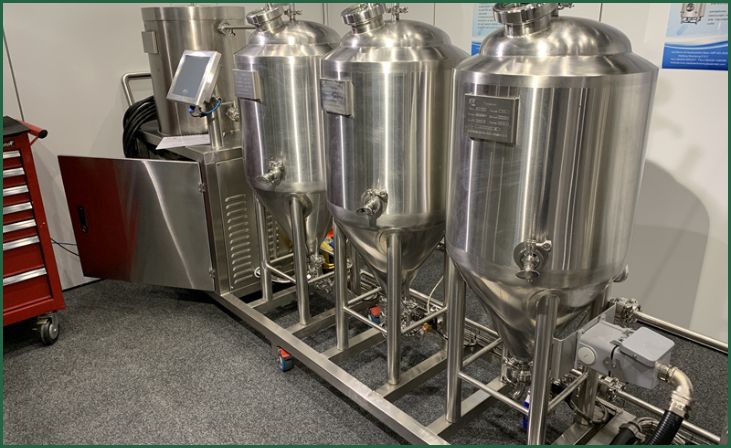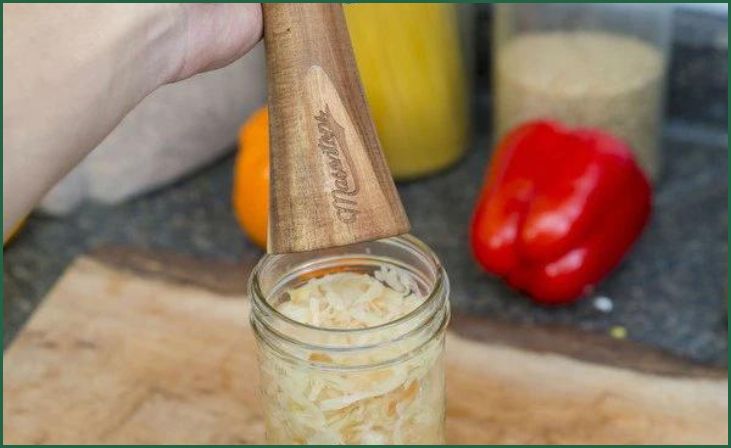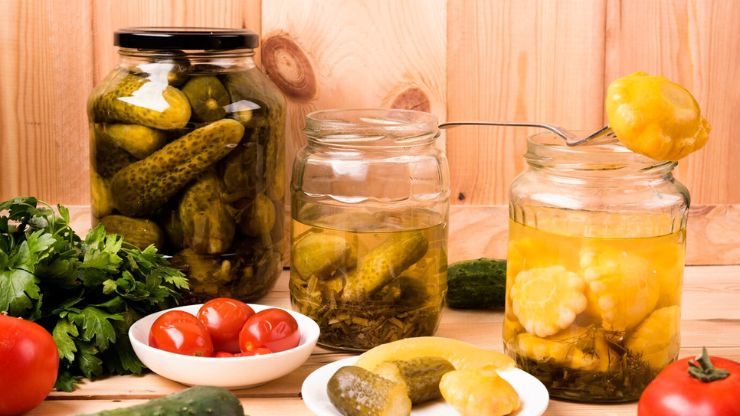Fermenting vegetables is similar to setting out on an exciting gastronomic journey; it is an endeavor that beckons exploration and necessitates the utilization of the appropriate equipment. In the realm of fermentation, precision and choice of equipment are paramount. This guide serves as your compass, navigating through the expansive landscape of fermenting possibilities. Here, we will intricately unravel the Top 10 Must-Have Equipment For Fermenting Vegetables, empowering you to commence your fermenting expedition with unwavering confidence and the key to unparalleled success.
Table of Contents
ToggleTop 10 Must-Have Equipment For Fermenting Vegetables
Embarking on the journey of fermenting vegetables requires the right arsenal of tools to ensure success. From vessels to pH meters, each piece of equipment plays a crucial role in crafting flavorful and probiotic-rich delights. Here’s a comprehensive list of the top 10 must-have equipment for your fermenting adventures:
1. Fermentation Vessels: Choose Your Vessel Wisely

Embark on your fermenting journey with a conscientious choice of vessel. The container you select plays a pivotal role in shaping the character of your fermentation process. Traditional crocks, with their rustic charm, evoke a sense of heritage and authenticity. On the other hand, modern glass jars offer transparency, allowing you to witness the transformation within. Whether you lean towards tradition or embrace modernity, your vessel choice contributes to the unique essence of your ferment.
Also Read:- Fermenting Broccoli
2. Airlocks and Fermentation Lids: Guardians of Purity
Maintaining an anaerobic environment is paramount for the success of your fermentation endeavors. Invest wisely in airlocks and specialized lids; consider them as the vigilant guardians of purity in the fermentation realm. These tools act as a barrier, keeping contaminants at bay while facilitating the escape of gases produced during fermentation. The result is an environment of utmost purity and integrity, ensuring the success of your fermenting alchemy.
3. Quality Salt: Foundation of Flavor
At the heart of every delightful fermented dish lies the foundation of quality salt. Your search for the type of salt that works best with the vegetables you’ve selected can turn into a culinary adventure in and of itself as you try out a variety of different salts. The right salt not only enhances the fermentation process but also elevates your creations to new culinary heights, establishing a flavorful foundation for your fermented masterpieces.
4. Digital pH Meter: Precision in Fermentation
Navigate the intricate world of fermentation with precision by incorporating a digital pH meter into your toolkit. This indispensable tool ensures that the acidity levels of your fermented vegetables are optimized. With scientific precision, the pH meter becomes your guide, allowing you to monitor the progression of your ferments and guiding you towards the perfect balance of flavors in each batch.
5. Vegetable Tamper: Efficiency in Packing

Efficiency is key when it comes to packing your vegetables for fermentation. The vegetable tamper emerges as a vital tool, ensuring a uniform and airtight packing process. By eliminating potential air pockets, this tool guarantees consistently delightful outcomes in each batch of your fermented creations.
6. Fermentation Weights: Submerge for Success
Maintain the success of your fermentation process by keeping your vegetables submerged in brine using fermentation weights. This simple yet crucial tool prevents mold growth, ensuring an even fermentation process. By laying the foundation for consistently excellent results batch after batch, fermentation weights become an indispensable asset in your fermenting toolkit.
Don't just scroll, subscribe!
BuzzTrail's unique web-stories are the cure for boredom you've been waiting for.
7. Storage Containers: Preserve Freshness and Flavor
As your fermentation journey reaches completion, the transfer of your delectable creations to storage containers becomes a crucial step. Opt for airtight containers to preserve the freshness and flavor of your fermented delights. These containers act as guardians, allowing you to enjoy your ferments at their peak, maintaining the quality that defines your culinary creations.
8. Cheesecloth or Coffee Filters: Balancing Protection and Aeration
Covering your fermenting vessels with breathable materials, such as cheesecloth or coffee filters, becomes a delicate yet essential practice. This protective layer shields your ferments from debris while allowing essential gases to escape. Striking this delicate balance is crucial for the success of your fermentation process, ensuring the optimal environment for your creations to flourish.
9. Labeling Materials: Stay Organized
Maintain order and clarity in your fermenting domain by labeling your containers with the type of vegetables and the date of fermentation. This simple organizational practice not only tracks the progress of your ferments but also ensures that you savor each creation at the peak of its flavor, adding a touch of methodical sophistication to your fermenting process.
10. Recipe Journal: Chronicle Your Experiments

Transform your fermenting endeavors into a documented odyssey by keeping a dedicated recipe journal. This chronicle becomes the repository of your experimentation, where you note down ingredient quantities, fermentation times, and personal observations. Each entry becomes a valuable insight, contributing to the refinement of your process with each batch. The recipe journal becomes the narrative of your evolution into a seasoned and discerning fermenting enthusiast.
Also Read:- Fermented Sugar Snap Pea Pickles
Conclusion
In closing, venturing into the realm of fermenting vegetables is not merely a culinary pursuit but a gratifying and enriching experience. As you take the first steps into this world of transformation and flavor evolution, the anticipation of discovering the nuances of fermentation adds an extra layer of excitement to your culinary journey.
Armed with the indispensable insights provided in this guide and equipped with the Top 10 Must-Have Equipment For Fermenting Vegetables, you’re poised on the brink of a delicious adventure. The carefully curated selection of tools is your arsenal, ensuring each ferment is a masterpiece, teeming with probiotic goodness and bursting with unique, complex flavors.
The knowledge shared within these pages is more than just instructions; it’s a companion on your fermenting odyssey. It empowers you to navigate the intricacies of the fermentation process with confidence and precision, turning each batch into a testament to your newfound expertise.
FAQs
How long does the fermentation process take?
How long does the fermentation process take?
The length of time depends on the type of vegetable, the temperature of the room, and your own personal preference. It can take anywhere from a few days to a few weeks for fermentation to finish.
Can I reuse the brine from a previous batch?
Can I reuse the brine from a previous batch?
Yes, brine can be used again. Make sure it comes from a good fermentation, and if you need to, change the amount of salt.

